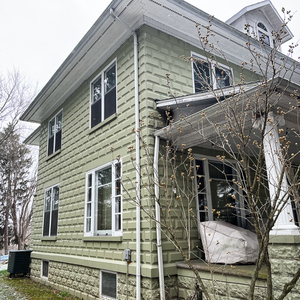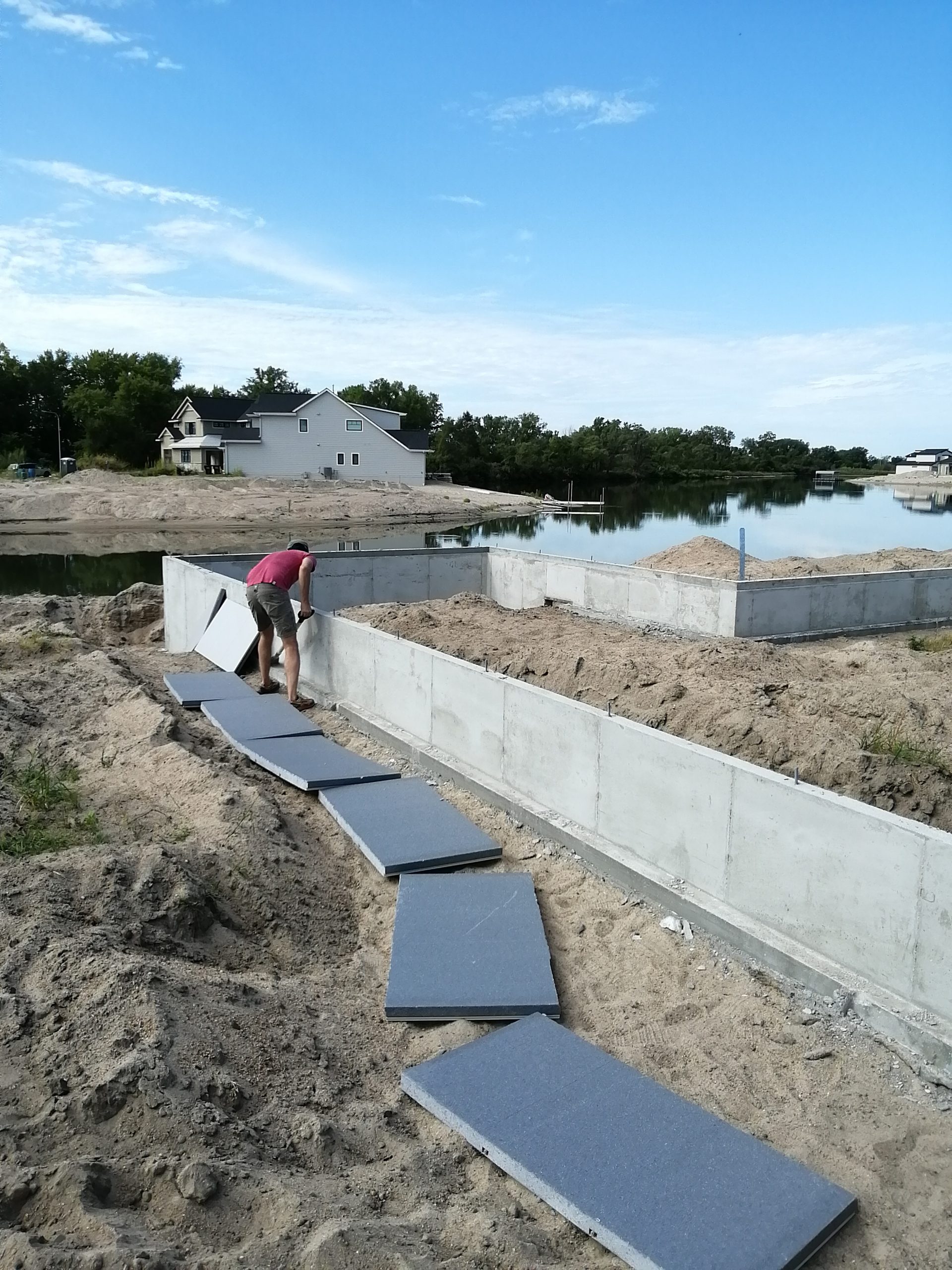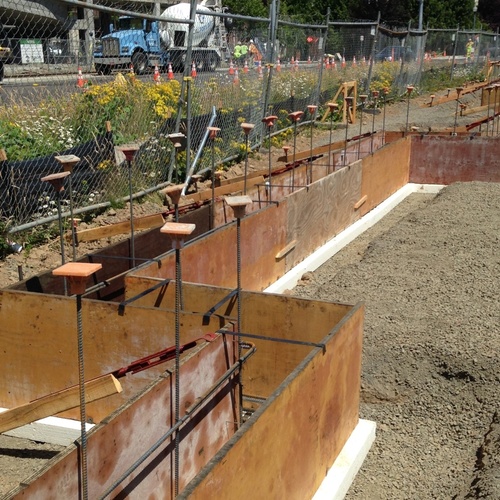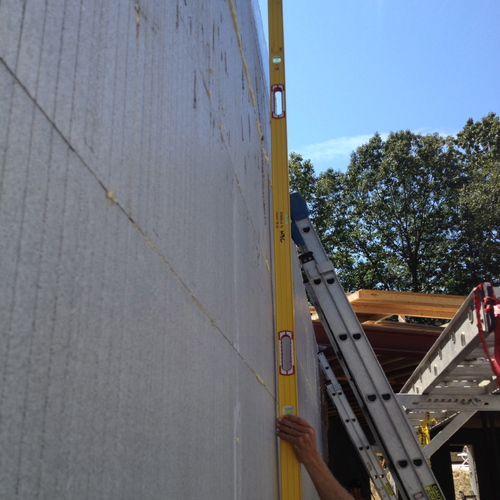
What’s the best way to insulate concrete basement walls? Does it matter whether the insulation goes on the inside or the outside?
There are several approaches to insulating the walls of a foundation or crawlspace, but a good place to start is with the International Residential Code (IRC). The most recent version, published in 2021, requires foundation insulation in climate zone 3 and up, although it’s always a good idea to check with local building officials for specifics in your area.
Insulation can be applied on either side of the foundation wall, and the code permits both continuous insulation (like rigid foam) and cavity insulation (such as fiberglass placed in a stud wall on the inside of the foundation). Code requirements are summarized in Table R402.1.3, but here are the basics:
- Climate zone 3: R-5 of continuous insulation or cavity insulation of at least R-13.
- Climate zone 4, except Marine: R-10 of continuous insulation or R-13 in cavity insulation.
- All other zones: R-15 of continuous insulation, R-19 of cavity insulation, or a combination of R-13 in cavity insulation plus R-5 of continuous insulation.
These are minimums. If you’re building to Passive House standards or you like the sound of the Pretty Good House approach, you’ll have to adjust accordingly. Insulation will make the basement more comfortable. It also will lower heating bills, although estimates of exactly how much seem to vary from study to study.
Foundations can be insulated when the house is under construction, before the foundation has been backfilled, or as a retrofit down the road. Two of the most common questions are what type of insulation to use, and whether an interior or exterior application makes the most sense.
Before diving in, it pays to remember that insulating basement walls differs from insulating above-grade walls or the…
Weekly Newsletter
Get building science and energy efficiency advice, plus special offers, in your inbox.

This article is only available to GBA Prime Members
Sign up for a free trial and get instant access to this article as well as GBA’s complete library of premium articles and construction details.
Start Free TrialAlready a member? Log in















8 Comments
There is another option, commonly used in tilt-wall and pre-cast construction, where a layer of insulation is integrated between two continuous wythes of concrete which are connected by structural ties through the insulation. Thermomass (https://thermomass.com/products/system-cip/) is an example of this type of system. I'm curious if anyone here has experience with something like that on a residential basement/foundation.
Hi Stuart, in residential (at least in my area) a similar approach is common with a concrete skin, insulation, and concrete "studs" in ready-made panels. Superior Walls is the most common: https://www.superiorwalls.com/
There’s a residential development in Newburyport, Massachusetts called
Hillside Center for Sustainable Living that uses a tilt-turn panelized wall system that was custom-fabricated by Blueprint Robotics. I’m not sold on the idea because of all the concrete but it’s noteworthy.
Thanks for the informative article. But I have to wonder, How can building this close to a water body be considered "green building"? From the picture it appears to be a virgin site. Where is this project located? Is there at least a silt fence and some type of erosion control somewhere hidden from view?
We had an energy efficient home built and we just moved in about a month ago. My husband and I just started thinking about landscaping, and I just realized that our contractor did not protect the outside of the ICFs. It's just the bare insulated part showing. Everything has been backfilled already.
The contractor is AWOL and won't respond to our calls or emails.
Are we completely screwed here? Is there a way to retro-protect the exposed part?
jeasto,
That's a problem for a couple of reasons. The ICF needs protection against pests and mechanical damage - which depending on where you are might not have to descend too far below grade, and be quite simple to do - but the exterior should also be waterproofed, and it sounds like that didn't happen either.
Does it need to be waterproofed if it's a slab on grade foundation? I've been trying to read through the building codes (I'm a layperson), and it seems like maybe waterproofing wasn't necessarily required if there was no living space on the other side of the wall. But I also might be misreading things.
FWIW, I live in Northwest Indiana, near the dunes, and the yard is all sand.
jeasto,
No you are right it doesn't. I assumed it was a basement or crawlspace as it is very uncommon to use ICF with slabs.
You can protect the exposed areas of foam with a variety of materials. This article lays out some of the options. How far you have to go down depends on what pests you need to exclude.
https://www.greenbuildingadvisor.com/article/how-to-finish-exterior-foundation-insulation
Log in or become a member to post a comment.
Sign up Log in